Chicken farming is an important economic sector in Vietnam, providing a nutritious food source and income for millions of farmers. However, the chicken industry is also facing many challenges and opportunities in the context of international integration and climate change. In this article, we will look back at the situation of chicken farming in Vietnam in the past 10 years, analyze the factors affecting the development of the industry and propose solutions to improve the productivity, quality and economic efficiency of chicken farming.
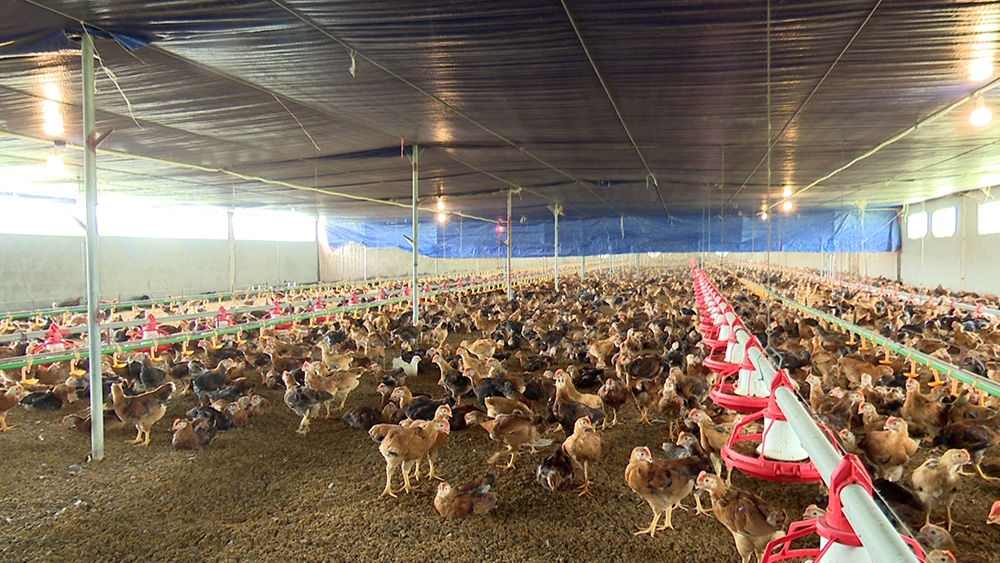
The current situation of Vietnam’s chicken farming industry
According to data from the Department of Livestock Production, Vietnam’s total chicken herd in 2022 is estimated at 316.916 million heads, accounting for 77.5% of the total poultry herd and growing by over 5% compared to 2011. Domestic chicken production reached 1.3 million tons, accounting for 64% of the total poultry meat production and growing by over 6% compared to 2011. Domestic chicken egg production reached 9.8 billion eggs, accounting for 53% of the total poultry egg production and growing by over 7% compared to 20112. In addition, Vietnam has also exported about 20 thousand tons of chicken and 1.5 billion chicken eggs to markets such as Cambodia, China, Japan, South Korea and Middle Eastern countries.
However, Vietnam’s chicken industry also faces many difficulties due to its small scale, lack of high-quality breeds, lack of safe animal feed sources and prices subject to market fluctuations. In particular, the epidemic is the biggest threat to the chicken industry, such as the H5N1, H5N6 and H7N9 avian influenza epidemics that have caused heavy damage to farmers in recent years. In addition, the chicken industry also has to compete with imported products from countries with greater technology and scale such as Thailand, Brazil and the United States.
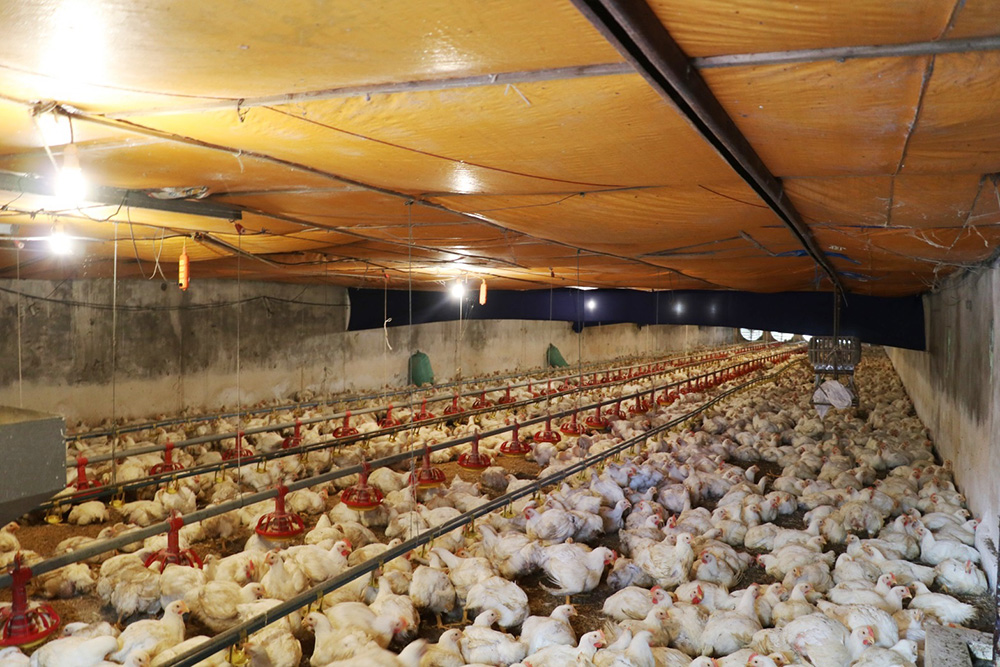
Challenges of the chicken industry in Vietnam
The chicken industry in Vietnam is facing many competitive challenges from many different aspects, affecting the economic efficiency and sustainable development of the industry. These competitive challenges include:
- High production costs due to the import of animal feed materials: According to data from the General Statistics Office, in 2020, Vietnam imported more than 17 million tons of animal feed materials, worth more than 6 billion USD. Feed materials account for about 70-80% of the cost of chicken production, so the dependence on imported sources increases production costs and reduces profits for farmers. In addition, the import of animal feed raw materials also poses potential risks to food safety and animal health, due to the possibility of carrying pathogens or prohibited substances.
- Avian influenza epidemic: Avian influenza epidemic is one of the biggest risks to the chicken industry, not only causing damage to the quantity and quality of products, but also affecting the reputation and confidence of consumers. According to the Ministry of Agriculture and Rural Development, from 2003 to now, Vietnam has recorded 128 cases of influenza A (H5) in humans, including 64 deaths. In addition, Vietnam also faces new avian influenza viruses such as A (H5N6), A (H5N8) and A (H5N2), which are capable of transmitting from poultry to humans. To prevent and control avian influenza epidemics, the chicken breeding industry must comply with regulations on quarantine, vaccination, and safe handling of sick or dead chickens.
- Competition from other countries: Vietnam’s chicken industry faces fierce competition from countries exporting chicken to Vietnam, such as the US, Brazil, South Korea, Poland, etc. Chicken products imported from these countries are cheaper than domestic chicken products due to their large breeding scale, high economic efficiency, and low production costs. According to data from the General Department of Customs, in the first 9 months of 2020, Vietnam imported more than 100,000 tons of chicken and chicken products, up 47% over the same period in 2019. The price of imported chicken ranges from 10,000-20,000 VND/kg, while the price of domestic chicken is from 30,000-40,000 VND/kg. This price difference has reduced the competitive advantage of Vietnam’s chicken industry in the domestic market.
- Lack of standards and quality certification: Vietnam’s chicken industry still lacks national technical regulations on technical requirements for chicken breeds, animal feed, chicken products and related services. The lack of this regulation makes it difficult to control quality, food safety and consumer protection. In addition, Vietnam’s chicken industry lacks prestigious certifications for product quality, biosafety, environmental protection, climate change prevention, etc. These certifications are required by free trade agreements such as the CPTPP and EVFTA. These are strict and new requirements for Vietnam’s chicken industry, requiring capacity improvement and technological transformation.
To overcome these competitive challenges, Vietnam’s chicken industry needs comprehensive and effective solutions, including: strengthening disease prevention, improving food quality and safety, diversifying products and markets, applying technology and science and technology, etc cooperation between stakeholders, improving the competitiveness of Vietnam’s chicken industry in the context of international economic integration.
Opportunities of the chicken industry in Vietnam
In recent years, the chicken industry has had many opportunities to grow thanks to the following factors:
- Domestic and international demand for chicken is increasing: According to data from the General Statistics Office, Vietnam’s chicken production in 2020 reached 1.2 million tons, an increase of 8.6% compared to 2019. The demand for chicken consumption by Vietnamese people is gradually increasing due to the diversification of tastes, health and food safety concerns. Chicken is considered a meat with high nutritional value, low fat and rich in protein. In addition, Vietnam’s chicken export market also has a lot of potential when it is expanded to countries such as Japan, Korea, China, Cambodia, etc. According to the Vietnam Poultry Association, Vietnam’s chicken export turnover in 2020 is estimated at 18 million USD, up 20% compared to 2019.
- Support from the government and international organizations: The Government of Vietnam has issued many policies to encourage and support the sustainable development of the chicken industry. Some typical policies such as: exemption from import tax on animal feed materials, support for preferential loans for enterprises and livestock households, support for building safe production value chains, support for the construction and recognition of breeding chicken production facilities, etc. In addition, international organizations such as the World Bank, FAO, USAID, etc. has also had many cooperation and support activities for Vietnam’s chicken industry in fields such as: improving management capacity, disease prevention, improving product quality, and accessing the international market,…
- Applying technology and science to animal husbandry: Technology and science are key factors to improve the efficiency and quality of the chicken industry. Chicken breeding facilities have applied many new technologies such as: biotechnology in breed selection, information technology in managing and monitoring chickens, feed processing technology, waste treatment technology, etc. In addition, scientific research has also contributed to the development of high-yielding native chicken breeds, suitable for the climatic and topographical conditions of Vietnam, such as Ri chickens, Noi chickens, Bamboo chickens, Ninh Hoa chickens, etc.
- Development of breeding chicken production and supply facilities: In order to ensure the source of quality breeds for the chicken breeding industry, breeding chicken production and supply facilities have been built and developed throughout the country. Currently, there are about 200 breeding chicken production establishments recognized as meeting national standards. These establishments not only provide breeding chickens for the domestic market but also export to neighboring countries such as Laos, Cambodia, Myanmar, etc. Breeding chicken production facilities have also applied measures to control quality, food hygiene and safety, and traceability of products.
The above opportunities have created a motivation for Vietnam’s chicken industry to develop strongly and sustainably, contributing to increasing income for people, creating jobs for rural workers and improving the export value of the agricultural sector.
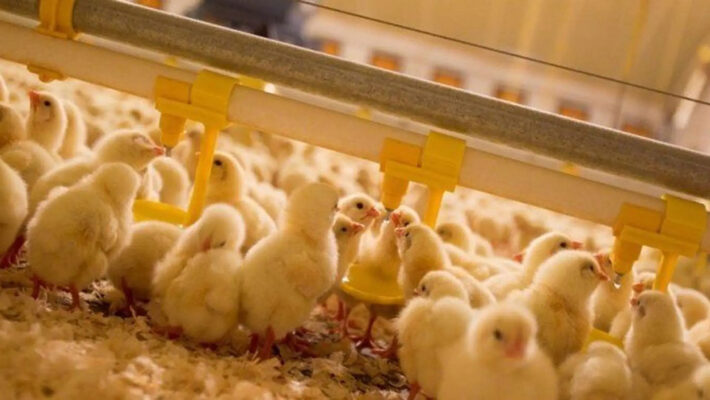
Some recommendations or solutions for the chicken industry in Vietnam
- Invest in disease research and prevention: Epidemics are one of the biggest risks to the chicken industry, not only causing damage in the quantity and quality of products, but also reducing consumer confidence, affecting market demand and prices. Therefore, investment in disease research and prevention is very necessary and important. The chicken farming industry needs to strengthen cooperation with research institutes, universities, and international organizations to study measures to prevent, control and handle diseases in poultry, such as avian influenza, Newcastle, Gumboro, Marek, etc. The chicken industry also needs to apply new technologies in tracking, monitoring and early warning of epidemics. In addition, the chicken breeding industry needs to comply with regulations on quarantine, vaccination, and safe handling of sick or dead chickens.
- Cooperation with international partners: Cooperation with international partners is one of the solutions to help Vietnam’s chicken industry access new resources, experiences and markets. Vietnam’s chicken industry has had many cooperation activities with international organizations such as the World Bank, FAO, USAID, etc. in areas such as: improving management capacity, disease prevention, improving product quality, and accessing the international market. Vietnam’s chicken industry has also signed many free trade agreements with other countries such as CPTPP and EVFTA, opening up many opportunities to export chicken products to major markets such as Japan, Korea, China, etc. However, in order to cooperate effectively and sustainably with international partners, Vietnam’s chicken industry needs to improve its competitiveness, meet the requirements of quality, biosecurity, environmental protection, climate change prevention, etc.
- Training and capacity building for employees: Employees are the key factor to improve the efficiency and quality of the chicken industry. Therefore, training and capacity building for workers is very necessary and important. The chicken breeding industry needs to cooperate with universities, research institutes, and international organizations to organize training courses, training, and training on skills and knowledge related to chicken breeding, such as: breeding, breeding, disease prevention, harvesting, processing, consumption, etc. The chicken industry also needs to apply new technologies in transmitting and exchanging information and knowledge between stakeholders. In addition, the chicken industry needs to create favorable conditions for workers to participate in learning, research, creativity and innovation activities.
Above is the whole situation of chicken farming in Vietnam, and the chicken industry in Vietnam is an industry with great potential, but it also needs to overcome many challenges for sustainable development. Only with the efforts of both the government, businesses and people, can the chicken farming industry achieve worthy achievements.
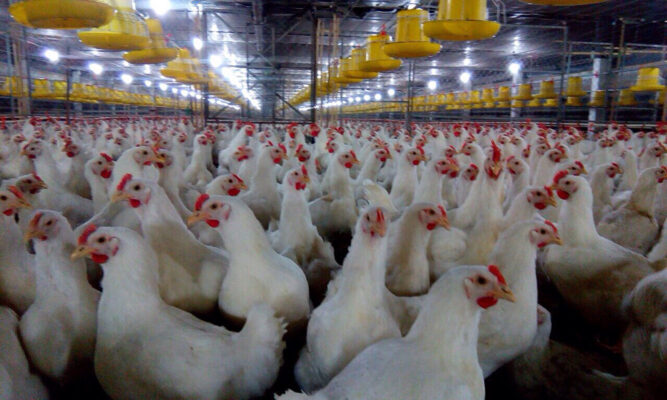
Developing a comprehensive chicken farming industry with Vietstock
Understand the challenges and opportunities of the livestock industry in general and the chicken industry in particular, in order to help livestock households and businesses,… There is a place to visit, connect, learn, and share experiences,… Vietstock Exhibition 2023 will bring the livestock industry many programs:
- Business Connection Program: at Vietstock 2023 allows businesses to update online: competency profiles; Typical products/technologies, this program will take place 1 month before the event, in order to help businesses connect in advance and prepare plans for “final decisions” when “meeting” at the exhibition.
- Technical conferences and seminars: before and during the exhibition, we will organize many conferences and seminars on topics that are of interest to the domestic and international livestock industry, in key livestock provinces and cities in Vietnam and Cambodia.
- Introducing technology, products and solutions: Vietstock 2023 will be an opportunity for businesses to showcase their typical products and services to potential customers. In addition, this work also helps visitors quickly update their knowledge, experience as well as solutions that are being applied by large enterprises in the industry.
- VIETSTOCK Award: This year, Vietstock will have more awards for businesses and organizations that have made many practical and meaningful contributions and achieved many achievements in the development of the country’s livestock & fishery industry.
- International Conference on Aquaculture: Especially this year, Vietstock Exhibition 2023 will be combined with the international exhibition specializing in aquaculture Vietnam 2023, promising to bring everyone access to the entire aquaculture value chain from the field of aquaculture, from fishing to processing.
- Sustainable Development booth: through the seminars and networking programs Vietstock 2023 will help promote the process of development, cooperation and association between businesses; creating a foundation for the development of value chains and advanced agricultural models.
- Group visitors: In particular, Vietstock 2023 is also very interested and eager to welcome businesses and visitors in distant places, so we have coordinated with Agricultural Extension Centers, Animal Health Sub-Departments in localities, organized sightseeing programs, etc providing detailed guidance and support for transportation for livestock households in remote areas to the exhibition.
- Egg booth: Vietstock Exhibition 2023 is held simultaneously with World Egg Day held around the world, so this year we have organized many activities on the egg industry such as: Egg Industry Seminar; Egg Showcase; Free spawning; Competitions and performances….
Vietstock is the leading international exhibition in the livestock, meat processing and animal feed industry that is held regularly, this year the exhibition will be held at the Saigon Exhibition & Convention Center, Ho Chi Minh City. Ho Chi Minh City from October 11 to 13, 2023.
This year, Vietstock gathers more than 350 leading business units in the livestock, animal feed and meat processing industries from more than 30 countries and territories. Along with many conferences and technical seminars held before and during the exhibition, this is definitely a great opportunity for businesses and livestock households to access new knowledge and technological solutions that are being applied very successfully in many countries.
Moreover, the B2B Exhibition – Vietstock is also a place for businesses and customers in the livestock industry to connect, expand their business together, and learn new ideas, products and services,… can be applied to their livestock model.
Don’t miss out on any of the exhibition’s activities and values by registering today!
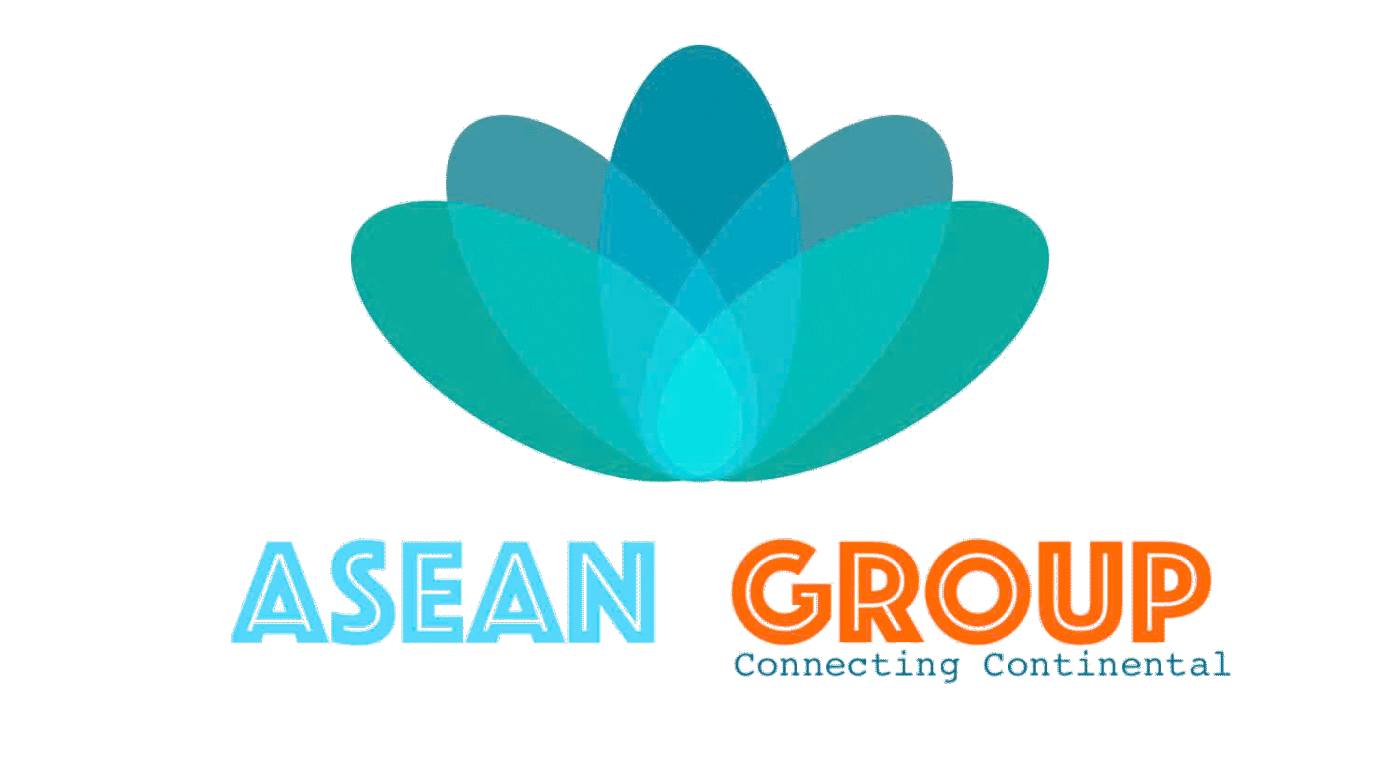
🌎 Website: asean-vietnam.vn/duhocmyb
📩 Email: English.MYB.Education@gmail.com
📸 TikTok: duhoc.english.myb
🌠 Instagram: English.MYB.Education